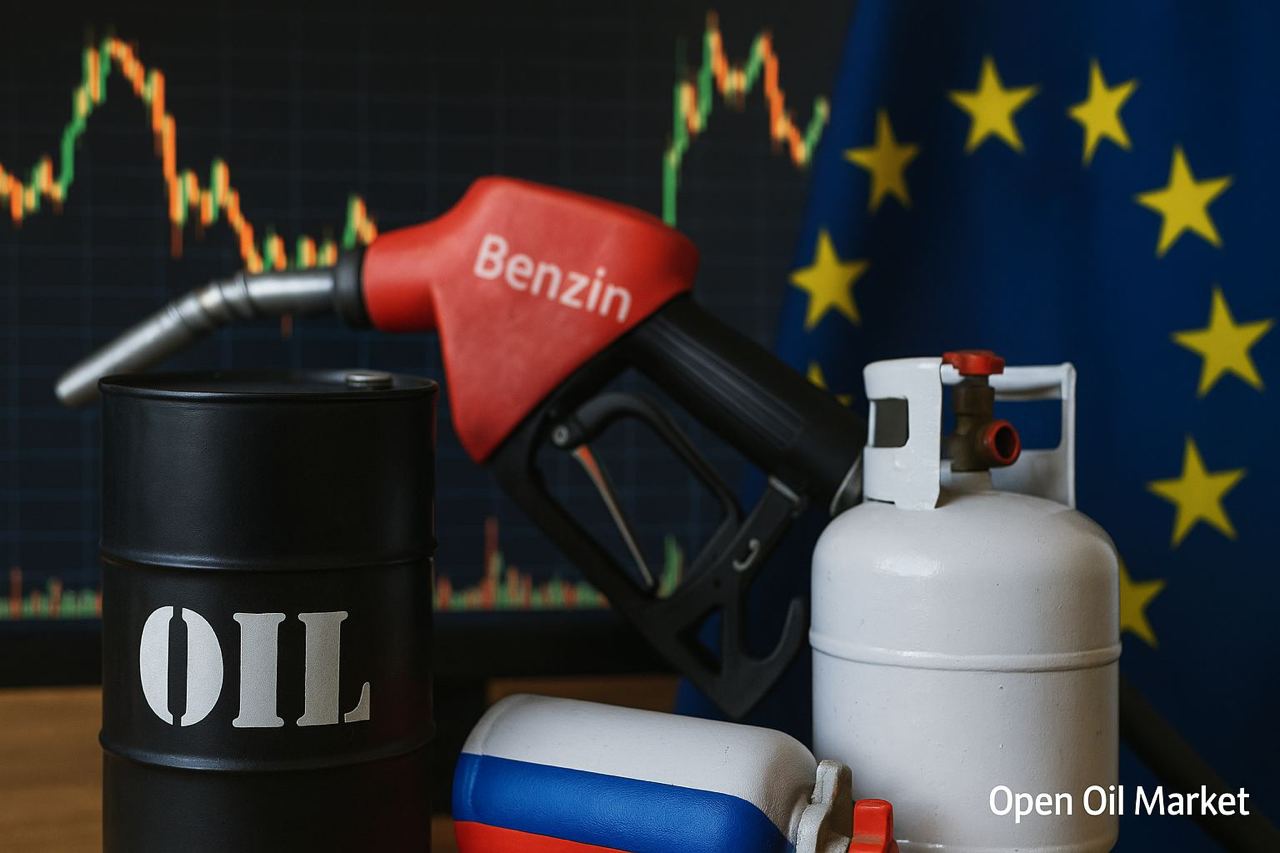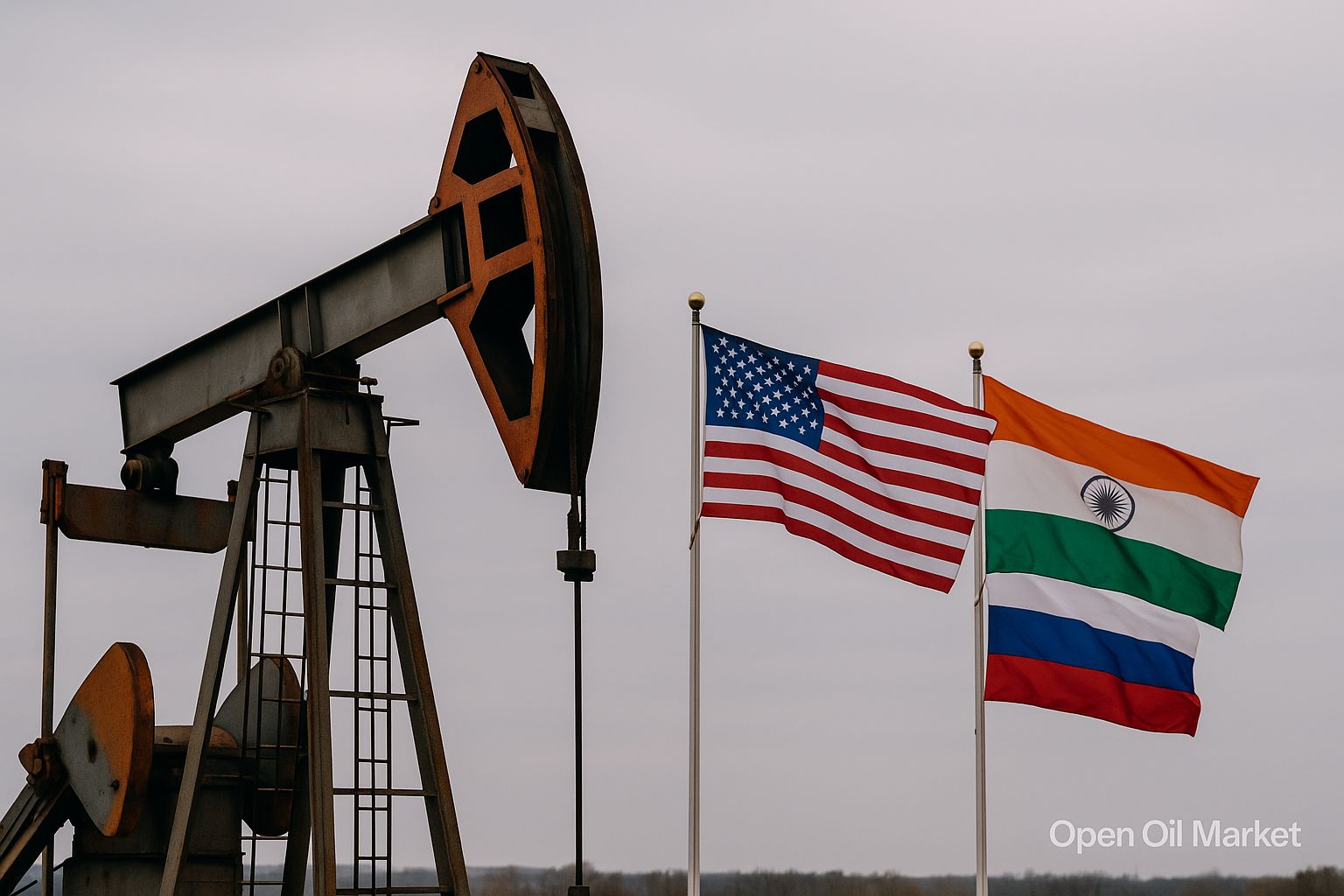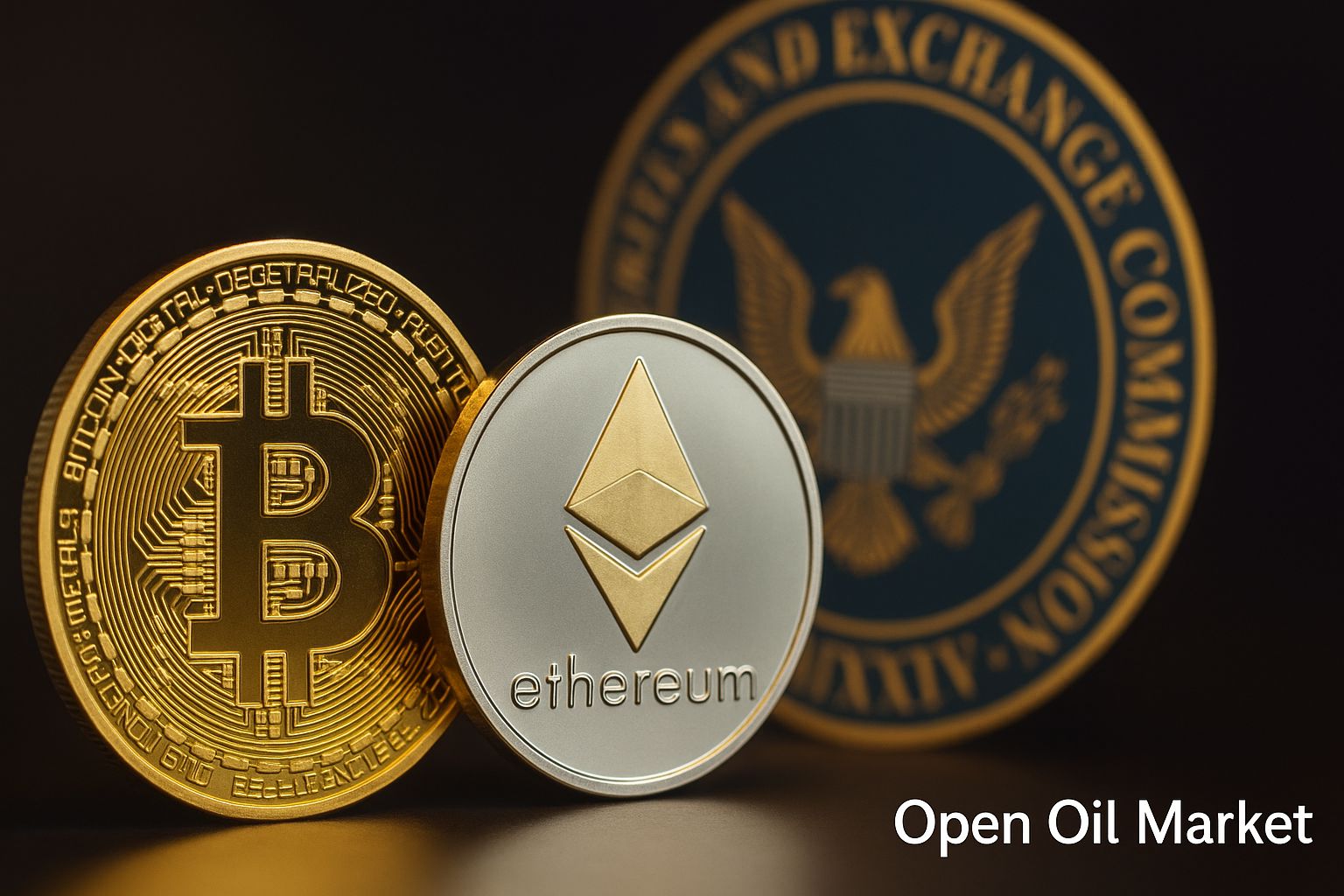
Oil and Gas Industry News, Monday, August 4, 2025: Brent Holds Near $70 Amid OPEC+ Output Increase, EU Gas Reserves Exceed 70%, Gasoline Export Ban Now in Effect
In the latest overview of the fuel and energy complex, we explore key events and trends as of August 4, 2025. The global oil market begins the week in a state of relative equilibrium, with Brent crude oil prices hovering around $70 per barrel due to coordinated actions by OPEC+ to raise output and stable demand. European gas storage facilities are being filled at record rates, now exceeding 70% of total capacity, which mitigates the risks of fuel shortages ahead of the forthcoming winter. In the domestic fuel market of Russia, authorities have implemented emergency measures to stabilize petroleum product prices, with a full ban on gasoline exports introduced in August to alleviate shortages at filling stations and control price increases. Additionally, we will examine the situation in the coal industry, the rapid growth of renewable energy sources (RES), recent trends in the electricity sector, and geopolitical factors reshaping global energy trade. This information will be valuable to investors and market participants in the oil and gas sector—ranging from oil, gas, and fuel companies to representatives of electricity, coal, and renewable energy industries.
Oil Market: Price Stability and OPEC+ Output Increase
As the week begins, oil prices remain relatively stable, with Brent trading around $69-$70 per barrel. Market balance is sustained by the interplay of positive factors and mitigating risks:
- Demand and Trade Policy. Market participants are closely monitoring the global external trade situation. The U.S. has secured key trade agreements with the European Union, Japan, and several other partners, avoiding a full-scale tariff war and supporting confidence in demand resilience. However, from August 1, Washington has introduced new tariffs on imports from several countries (including India and Canada) that did not conclude agreements, adding uncertainty. Nevertheless, the global summer travel season is driving high demand for gasoline and jet fuel in major economies (U.S., China, etc.). Leading analytical agencies project that global oil consumption will increase by approximately 1.2 million barrels per day in the second half of 2025, reflecting a sustained recovery in demand.
- OPEC+ Supply. The OPEC+ alliance continues to boost production after a period of constraints. At an extraordinary meeting at the beginning of August, participants agreed to increase the collective quota by 548,000 barrels per day in September—another step towards the gradual lifting of previous cuts. Several leading producers are already operating close to maximum levels; for instance, Russian oil production in June exceeded the established quota (approximately 9.19 million against a limit of 9.05 million barrels per day). Similarly, Saudi Arabia, Iraq, the UAE, and some other countries are exceeding their plans, although certain participants, such as Nigeria, remain below quotas. From April to July 2025, total OPEC+ production increased monthly by about 411,000 barrels per day, with a one-time jump of an additional 548,000 barrels per day scheduled for September. Further supply increases are expected beyond OPEC: Chevron has obtained permission to resume production in Venezuela, potentially bringing over 200,000 barrels per day back to the market. Thus, the expansion of supply from OPEC+ and other sources, along with ongoing economic risks, exerts a "cooling" effect on oil prices.
- Macroeconomic Factors. At the end of July, commercial oil inventories in the U.S. fell more than anticipated, reflecting robust consumption and preventing sharp declines in oil prices. At the same time, incoming signals regarding a global economic slowdown are tempering expectations for further tightening in monetary policy. The U.S. Federal Reserve maintained its rate at the July 30 meeting, which, along with sluggish job growth, enhances expectations of a softer policy in the future. This fuels investor interest in commodity assets, including oil. Despite the relative balance in the market, oil prices remain sensitive to any negative news regarding economic dynamics or unexpected actions from producers.
As a result, the oil market enters a new week in a state of moderate equilibrium. Brent quotes remain at the upper end of the range observed in recent months but remain vulnerable to external factors.
Gas Market: Record Storage Levels Reduce Winter Risks
The European natural gas market continues to rapidly build up reserves ahead of the heating season. According to Gas Infrastructure Europe, underground gas storage facilities in EU countries are currently filled to approximately 69-70%—an unprecedented level for the transition from July to August in recent years. In absolute terms, reserve volumes are estimated at over 75 billion cubic meters. The refilling rates are also record-high: in June, European companies injected around 12.4 billion cubic meters of natural gas, marking the highest monthly volume in the past three years. This was facilitated by a relatively mild winter that limited gas withdrawal, reduced consumption in the economy, and high liquefied natural gas (LNG) supplies—around 12 billion cubic meters in June (primarily from the U.S., Qatar, and other exporters), which is also a record for a summer month.
Thanks to high reserves and diversification of supply sources, gas prices in Europe have remained relatively stable in the summer of 2025. Prices at the largest TTF hub are significantly lower than the peak levels recorded during the 2022 crisis, fluctuating within a consumer-friendly range, although the current level is still above pre-crisis averages. According to the IEA, wholesale gas prices in Europe for 2025-2026 are expected to remain above $400 per 1,000 cubic meters due to structural market factors. This is significantly above the historical norm, yet considerably below the extremes of the energy crisis period. Overall, record storage levels reduce the likelihood of sharp price spikes this coming winter, which is viewed positively by investors and industrial gas consumers. At the same time, market participants are closely monitoring the EU's further steps to enhance energy security. Brussels has extended the requirements for mandatory filling of gas storage facilities for another two years (target—90% by the start of each winter season) to secure high reserve levels for future winters. Additionally, politically, the EU is discussing potential new restrictions on the import of Russian gas, reflecting a desire to finally reduce dependence on supplies from the Russian Federation.
Russian Fuel Market: Export Ban and Price Stabilization Measures
The domestic market for petroleum products in Russia faced a tense situation this summer due to a rapid increase in gasoline and diesel fuel prices. In July, exchange prices for automotive gasoline on the St. Petersburg International Commodity Exchange reached historical highs (AI-95 grade rose above 75,000 rubles/ton), creating additional pressure on independent filling stations and consumers. The causes include a combination of seasonal factors (increased summer demand from agricultural and tourism sectors) and supply constraints. Several oil refineries halted part of their capacity for scheduled repairs between June and July, reducing gasoline and diesel production. Additionally, certain major players, as determined by the Federal Antimonopoly Service (FAS), significantly decreased fuel sales on the exchange. In particular, the FAS initiated a case against a subsidiary of Gazprom for reducing sales of AI-92 gasoline by 74% and AI-95 by 50% in late spring, which may have triggered shortages and price spikes in the market.
The Russian government, in collaboration with oil companies, swiftly implemented a set of measures to stabilize the situation. Key steps include:
- Complete Ban on Gasoline Exports. A temporary embargo on the export of automotive gasoline for all producers has been put in place from August 1, 2025, to August 31 (inclusive). Previously, partial restrictions on gasoline exports for independent traders had been in effect since March; now the ban applies to the entire market to redirect additional volumes of fuel towards domestic needs. These restrictions may be extended into September if necessary.
- Increased Monitoring and "Dampers." Market monitoring of fuel trading has been intensified, and the price "dampers" mechanism, which limits excess profits from fuel exports, is actively used. When the export alternative exceeds the baseline indicative level, payments to oil producers from the budget are reduced, decreasing the incentive to export fuel abroad.
- Mandatory Exchange Sales. There are considerations to raise the mandatory fuel sales regulations on the exchange (from the current 15% of production volume for gasoline) to increase trading liquidity and saturate the market with supply.
It is expected that in August, the growth of retail fuel prices will noticeably slow down, as oil companies will strive to keep prices stable, anticipating a soon-to-be lifted export ban. However, it seems that strict restrictions will likely remain in effect through September, with hopes for a complete lift only closer to the cold season when fuel demand is expected to naturally decrease. The market has already reacted to the announced interventions: in the second half of July, wholesale prices stopped rising. By the end of trading on July 25, AI-92 gasoline decreased by approximately 1.5% (to ~65,300 rubles/ton), while AI-95 decreased by 1.1% (to ~75,400 rubles/ton) in anticipation of the export ban's implementation. Although price levels remain close to records, signals of government intervention have allowed for a trend reversal and have indicated stabilization. Diesel fuel, experiencing less scarcity, has almost ceased to increase in price.
Experts note that the further dynamics of prices will depend on the duration of export restrictions and the effectiveness of supportive measures. Administrative steps are likely to help contain fuel price increases in August-September. However, if the ban is lifted in the fall, another price surge is not excluded if the root causes of the crisis (low gasoline reserves and maintenance downtimes at oil refineries) are not addressed. The government will need to balance the necessity of keeping prices down in the domestic market with providing sufficient incentives for oil producers to avoid a repeat fuel shortage during the harvest campaign and the onset of the fall season.
Coal Industry: Record Production Amid Cautious Demand
The global coal sector is reaching a new peak in production in 2025, although the pace of consumption growth is slowing. According to IEA forecasts, global coal production could reach around 9.2 billion tons this year, marking a historic high. China's internal coal production increase remains a key contributor to this growth as part of its energy security strategy. Meanwhile, many countries are announcing plans to gradually phase out coal from their energy balance, so demand is increasing at a much slower rate than production.
In Russia, coal continues to hold a significant share in both electricity generation and industry export revenue. The output of Russian companies remains close to record levels, and under sanctions, the coal industry is actively shifting towards Asian markets. The government supports exporters by developing port infrastructure in the Far East and subsidizing railway transport to increase shipments to the Asia-Pacific region. Looking ahead, despite the continued importance of coal, the industry will need modernization and increased eco-friendliness—in line with the global trend towards reducing carbon emissions. In the medium and long term, coal companies will increasingly face challenges from the "green" transition, although in the coming years coal will remain in demand for ensuring basic energy supply in several countries.
Renewable Energy: Record Capacity Growth and Environmental Impact
Renewable energy sources (RES) are rapidly gaining traction both globally and in Russia. According to data from the Association for the Development of Renewable Energy (ARVE), domestic solar and wind power plants have prevented emissions of about 8 million tons of CO2 in the past year. Although the share of RES-based generation in Russia's energy balance remains small (a few percent), it is growing rapidly. In 2025 alone, new wind farms and solar stations are being put into operation, particularly with many projects being realized in southern regions and the Far East. Additionally, pilot initiatives for small hydropower plants and biofuels are being launched.
Global trends show record growth rates in "green" energy. China remains the largest investor in this field: in the first five months of 2025, approximately 46 GW of new wind capacity and around 200 GW of solar capacity were installed in China—an unprecedented scale. As a result, more than 90% of all new energy capacities introduced in China this year come from clean sources. At the same time, to ensure baseline load, China continues to build modern coal-fired power plants, even though the share of coal in total generation is gradually declining. In Western countries, renewable energy is already practically displacing coal: the variable nature of solar and wind generation is compensated by gas-fired power plants and energy storage systems. All this signifies a global turning point in energy. Investments are increasingly shifting towards RES, while carbon-intensive industries are forced to adapt to new realities. For energy sector investors, the green trend presents vast opportunities—from developing solar and wind power projects to modernizing grid infrastructure and energy storage systems.
Electric Power Sector: Decreased Output and Increased Tariffs
In the electric power sector in Russia, a slight decline in overall electricity generation was recorded in the first half of 2025 compared to the same period last year. According to Rosstat, total production for the six months amounted to about 600 billion kWh, which is 1.9% lower than the previous year. The main reason for the decline is a low-water year, which significantly reduced hydropower generation.
- Hydropower: ~98 billion kWh (−12% compared to the first half of 2024).
- Thermal Power: ~394 billion kWh (+0.5%).
- Nuclear Power: ~104 billion kWh (−0.3%).
As a result, the share of thermal and nuclear energy in the generation structure has increased, while the contribution of hydropower stations has decreased due to natural factors. Another significant event for the sector was the change in electricity tariffs. As of July 1, 2025, a planned annual price indexation for consumers and businesses was conducted: electricity tariffs (as well as housing and utilities) were raised by an average of 11-12% across the country. This increase, mandated by the government, is intended to help energy companies offset inflationary costs and invest in infrastructure maintenance. However, the rise in payments increases the burden on industry and households. In response, the authorities announced support measures: targeted subsidies for low-income citizens are being introduced to mitigate the impact of tariff increases. Regulators have also indicated that the pace of tariff growth will slow in the coming years (for example, +9% is expected in July 2026). For investors in the electric power sector, the rise in tariffs signals potential revenue growth for energy supply and generating companies, although the government is closely monitoring to ensure that tariff policy does not drive overall inflation or hinder economic growth.
Geopolitics and Energy Resource Trade: Restructuring Global Flows
Geopolitical factors continue to significantly affect global energy resource trade, initiating a redistribution of oil, gas, and coal flows between regions. A notable event is the sharp decline in energy trade between the U.S. and China amid escalating tensions. In June 2025, China did not purchase any oil, LNG, or coal from the U.S. for the first time in nearly three years (according to Bloomberg). Experts attribute this to rising trade tensions and Beijing's desire to diversify supply sources. China is increasing oil imports from Middle Eastern and African countries, as well as boosting purchases of Russian crude, taking advantage of price discounts on Urals grade. A similar picture is observed with natural gas: significant volumes of LNG are arriving in China from Qatar, Australia, and the spot market, effectively bypassing American gas.
Simultaneously, Washington is intensifying pressure on Russia. President Donald Trump threatened to impose 100% tariffs on countries buying Russian oil to limit Moscow's revenues and accelerate the cessation of the conflict in Ukraine. These statements create uncertainty regarding the future of substantial volumes of Russian exports (primarily to China and India) and may lead to a realignment of global oil flows.
In Europe, the trend continues towards reducing dependence on Russian energy carriers. Imports of Russian oil and petroleum products into the EU have effectively ceased due to the existing embargo, and pipeline gas supplies have been reduced to minimal amounts. The EU is actively developing infrastructure for receiving LNG (new terminals are being built, and long-term contracts are being signed with alternative suppliers) to replace falling volumes. However, completely abandoning Russian gas in the short term is challenging for Europe: some countries, like Hungary, still largely depend on Gazprom's gas due to previously signed contracts. Political disagreements within the EU are manifested in public statements by leaders of these states—for example, Budapest has indicated that if a ban on Russian gas is enacted at the EU level, Hungary will seek its own solutions directly with Moscow. Such signals emphasize the limitations of a unified position within the bloc concerning energy security.
Overall, there is a transformation of global energy trade influenced by sanctions, trade disputes, and strategic decisions by countries. While the current pricing environment for oil, gas, and coal is largely determined by fundamental supply and demand factors, political decisions can rapidly alter the availability of certain energy carriers for entire regions. The energy sectors enter the second half of 2025 in a state of relative balance, but with clear signals of future changes:
- Oil Market: remains relatively stable due to producers' coordination but is sensitive to economic risks and potential sanctions-related upheavals.
- European Gas Market: approaches winter with near-record gas reserves, reducing concerns about sharp price spikes.
- Russian Fuel Market: is becoming increasingly tightly regulated by the state; such "manual control" measures will likely become the norm in the near future to prevent crises.
- Global Energy Transition: renewable energy is achieving record growth, while the coal industry peaks before an anticipated downturn.
For investors and companies, this means the necessity to adapt to new realities: flexibly respond to market changes and seek opportunities in rapidly growing segments while remaining vigilant amid a combination of market and geopolitical factors.




